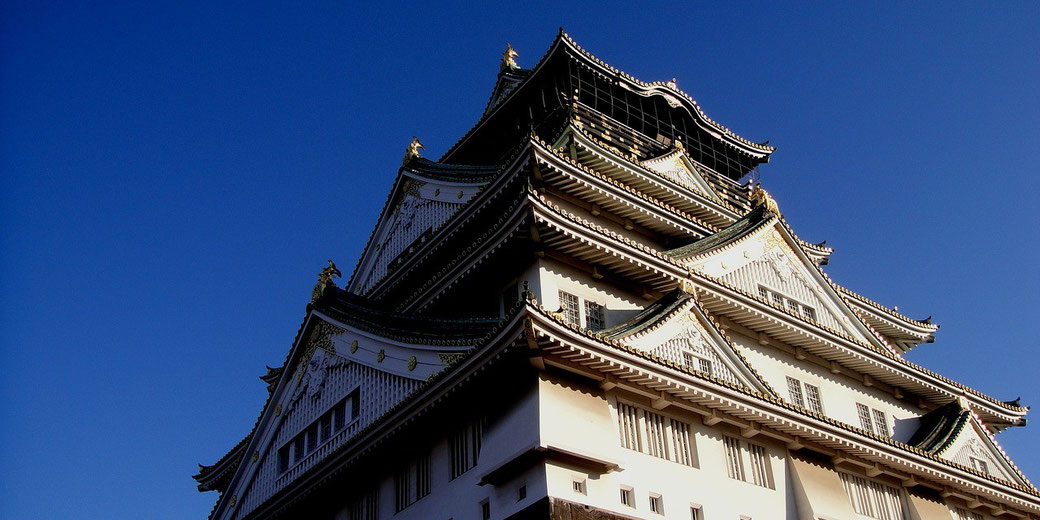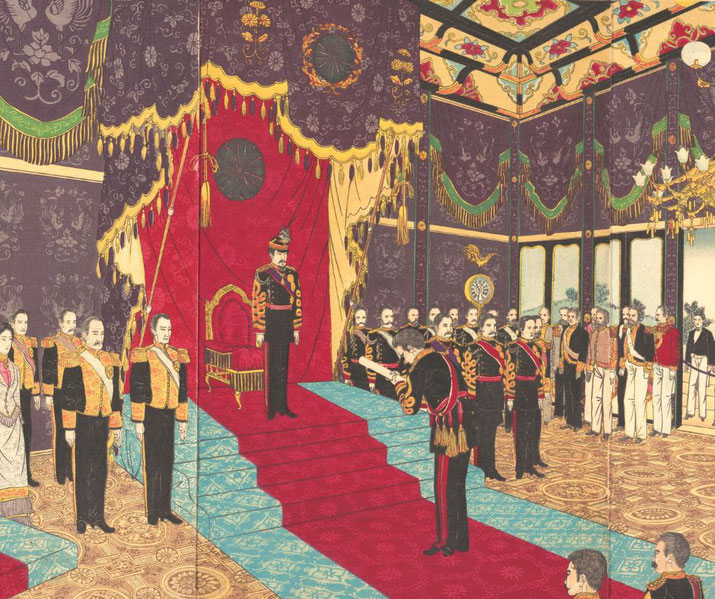What was the Meiji Restoration?

In 1868, Japan started to undergo a massive transformation called the 'Meiji Restoration'. This saw the rise of modern Japan and all that came with it.
This period was one of rapid changes, as the country rapidly industrialised and moved away from its traditional ways of life.
How America forced Japan to open to the world
In the 1630s, Japan had been isolated from the rest of the world by the Tokugawa Shogunate in a policy known as sakoku.
This period of isolation came to an end in 1853 when American Commodore Perry arrived in Japan with a fleet of ships and demanded that the country open up its ports to trade.
The Tokugawa Shogunate was forced to comply, and as a result, Westerners began to flood into Japan.
These foreigners brought with them new technologies and ideas that quickly began to change Japanese society.
In 1867, Emperor Meiji came to the throne. He was crowned in the following year, which coincided with the end of the Tokugawa Shogunate and the restoration of power to the imperial family.
This event is known as the Meiji Restoration.
Causes of the Meiji Restoration
There were many factors that led to the Meiji Restoration. One key cause was growing dissatisfaction with the Tokugawa Shogunate among Japanese people.
Many Japanese people were dissatisfied with the way their country was being governed.
There was a growing belief that the Tokugawa Shogunate was weak and corrupt.
Another important factor was the arrival of foreigners in Japan and the introduction of Western ideas and technologies to Japanese society.
Finally, Emperor Meiji played a significant role in the Meiji Restoration. He was a young and reform-minded leader who was eager to modernise Japan.
The Meiji Restoration had far-reaching effects on Japanese society. One of the most significant changes was the end of feudalism in Japan.
The Meiji Restoration also saw a dramatic increase in Westernisation, as Japan rapidly industrialised and adopted many Western technologies and ideas.
This period marked a major turning point in Japanese history, as the country began to emerge as a modern nation state.
The new emperor was only 15 years old, and his authority was limited. The real power lay with a small, tight-knit cabinet of advisors.
One of their major worries was that if Japan did not modernise, it would lose its autonomy to a stronger European power.
Such worries were not groundless, especially with the recent show of the stronger US military weapons by Commodore Perry in 1853.
How did Japan modernize so quickly?
In 1868, Emperor Meiji issued the Charter Oath, which outlined his vision for Japan's future.
The Charter Oath called for various reforms, such as the abolition of feudalism, the introduction of representative government, freedom of speech and religion, and compulsory education.
These reforms would help to modernise Japan and bring it in line with the Western countries.
One of the most important aspects of modernisation was the promotion of industry.
The Meiji government realized that Japan needed to industrialise in order to compete with Western powers.
To this end, they adopted a number of policies to encourage industrialisation. One policy was the establishment of state-owned factories. Another was the importation of foreign technologies and experts.
Finally, the Meiji government provided financial incentives for private businesses to invest in industry.
The Meiji government also began to centralise power and create new institutions such as a national army and navy, and a centralized bureaucracy.
This new bureaucracy was modeled on the German civil service system. It helped to professionalise and streamline government administration.
The Meiji Constitution, which was promulgated in 1889, also helped to centralise power by creating a bicameral legislature known as the Imperial Diet.
The westernization of Japan
The Meiji period saw a dramatic increase in Westernisation, as Japan rapidly adopted many Western technologies and ideas.
This process of Westernisation had a profound impact on Japanese society. One of the most visible changes was the rise of cities.
Tokyo, in particular, underwent a transformation during this time as it rapidly modernised.
New Western-style buildings and roads were built, and the city became increasingly crowded and congested.
This encouraged the rise of powerful family-owned industrial conglomerates, known as zaibatsu, such as the companies Mitsui and Mitsubishi.
Another significant change was the spread of education. In 1872, the Meiji government introduced the Education Order, which established a modern public school system throughout Japan, aiming to increase literacy and create an educated workforce capable of supporting the nation's industrialization.
It made education compulsory for all children between the ages of six and fifteen.
This helped to create a literate population that could participate in the new industrial economy.
In addition, Western-style universities were established during this time. These institutions produced a new generation of educated Japanese who were exposed to Western ideas and values.
The Meiji period saw Japan's population grow from about 33 million in 1872 to over 45 million by 1912, which also caused an increase in social mobility.
With the end of feudalism, people were no longer bound to their traditional social class.
This created opportunities for upward mobility, as people could now aspire to achieve a higher social status.
Emperor Meiji directed the movement with the motto of “Enriching the nation and strengthening the military”.
So, in 1873, the Meiji government introduced universal conscription, which required all men to serve in the military, which was a significant shift from the previous reliance on the samurai class for defense.
The emperor himself showed how far he embraced these programs in both action and appearance.
He donned Western military clothing, styled his hair in a Western manner, and grew a German-style mustache.
The Iwakura Mission
In 1871, five years after the emperor was restored to the throne, Emperor Meiji dispatched a group of Japanese officials on a diplomatic mission to visit Western countries.
A Meiji adviser, Iwakura Tomomi, was the leader of a delegation of about 50 government officials on an 18-month diplomatic mission to Europe and the United States.
This group became known as the Iwakura Mission and it helped introduce Western ideas and technologies to Japan.
Many suggestions for school and university improvement, factories, power plants, cultural activity, the police, military, and government came back from their trip.
The Meiji Constitution
In 1889, the Meiji Constitution was promulgated. The Meiji Constitution was modeled after the constitutions of Western countries, and it helped to solidify Japan's status as a modern nation-state.
It defined the roles and responsibilities of the emperor, as well as all Japanese people's rights and duties.
The Meiji Constitution established the Imperial Diet (Japanese legislature), which was a bicameral legislature that consisted of both an upper and lower house.
The Diet had limited power, but it represented a significant step forward for Japanese democracy.
The Meiji Constitution's framers kept the imperial system while simultaneously becoming a modern nation-state in order to maintain a link between past and present and preserve order.

The formation of the Japanese Diet
The Japanese Diet consisted of a House of Peers and a House of Representatives. The House of Peers was made up of members of the upper class, particularly members of the Imperial Family.
The House of Representatives was elected by male landowners, specifically members of the nobility, and people nominated by the emperor.
The Diet played a key role in passing laws and budgets, but it was limited by the emperor's power to veto any legislation that he did not agree with.
What do you need help with?
Download ready-to-use digital learning resources
Copyright © History Skills 2014-2025.
Contact via email
With the exception of links to external sites, some historical sources and extracts from specific publications, all content on this website is copyrighted by History Skills. This content may not be copied, republished or redistributed without written permission from the website creator. Please use the Contact page to obtain relevant permission.





